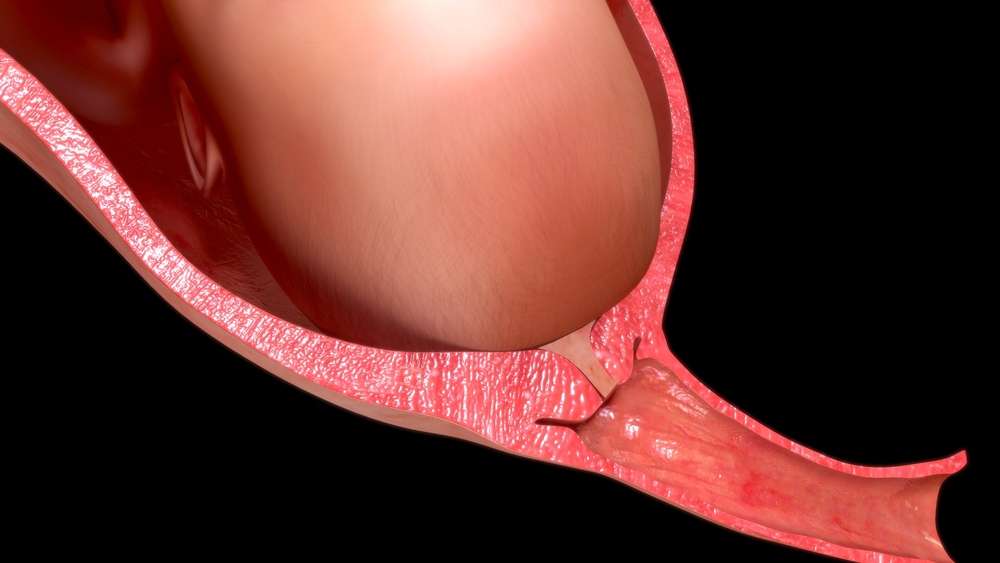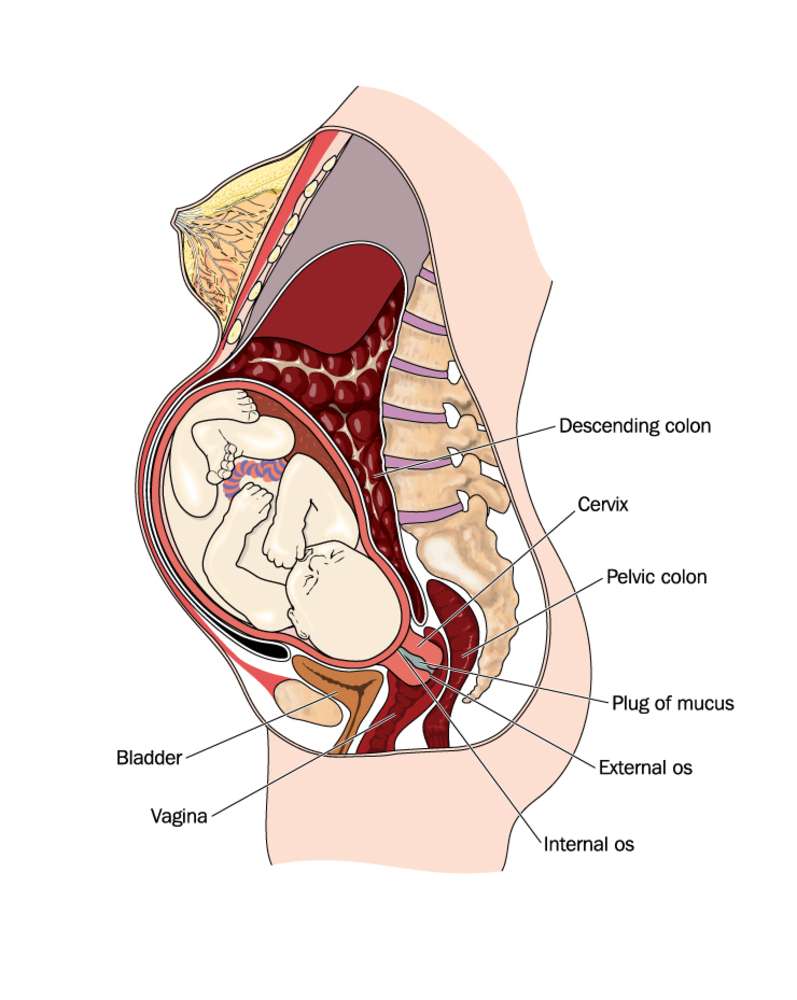Mucus plug
Introduction:
If you’re carrying a child, you’ve probably heard the term “mucus plug” being bandied about in pregnancy-related conversations. A mucous plug, nevertheless, exactly what is it? We’ll go deeply into the topic of mucus plugs in this post and provide you all the details you require about this intriguing occurrence.
What is a mucus plug?
When a woman is pregnant, a jelly-like substance called a mucus plug, commonly referred to as a cervical plug, forms in the cervix. It serves as a barrier of defense, closing off the cervix’s opening to stop dangerous microorganisms from getting inside the uterus. This built-in defense system protects your developing child from dangerous infections.

Structure of mucus plug:
The mucus plug is made up of both cervical and vaginal secretions. It’s a thick, sticky substance that, depending on a number of variables, might be clear, somewhat yellowish, or even brownish in hue. It can be clearly distinguished from typical vaginal discharge because of its consistency, which is comparable to that of raw egg whites.
Development of a mucus plug:
Your cervix changes significantly early in pregnancy. The cervix increasingly generates more mucus as the pregnancy continues. This extra mucus gathers and hardens to form the mucus plug, which closes the cervix to safeguard your unborn child.
What does a mucus plug look like?
Now that we are clear on what a mucus plug is, let’s look at how it looks. The appearance of a mucus plug can vary depending on the individual’s pregnancy experience, so keep that in mind.
Color:
The stage of pregnancy and the presence of blood are two factors that might affect the mucus plug’s color, which can also change. It is typically clear to slightly yellowish. However, some women could detect pink or brown streaks of blood within the mucus plug. This is referred described as “bloody show,” and it might happen as the cervix begins to enlarge.
Size and consistency:
Every woman’s mucus plug is different in size. Some people say it is as small as a dime, while others might have larger mucus plugs that are the size of a golf ball. It frequently has a sticky, jelly-like consistency that resembles the texture of a thick, amorphous blob. This distinct texture aids the mucus plug’s ability to successfully seal the cervix, shielding your unborn child from dangerous germs.
Time of discharge:
Throughout pregnancy, a mucus plug may come out at different periods. While some women might experience it as early as the first trimester, others might not until closer to the due date. It’s crucial to remember that losing the mucus plug doesn’t always mean labor is about to start. Instead, it’s one of many indications that your body is getting ready to give birth.
Losing mucus plug:
Losing the mucus plug is a common sign that your body is getting ready for delivery and is a normal part of pregnancy. A thick, gel-like substance called the mucus plug, often referred to as the cervical mucus plug, develops in the cervix during pregnancy. Its function is to seal off the cervix and guard against infection of the uterus. The following are some crucial details about losing mucus plug:
Timing:
Although losing the mucus plug can occur at any time in the later stages of pregnancy, it most frequently occurs in the final few weeks before labor. A few days or even weeks before labor starts, some women may get depressed.
Aesthetics:
The mucus plug often has a pink, brown, or faintly bloody tint and is transparent or hazy in general. The blood could be the result of tiny blood vessels rupturing when the cervix softens and enlarges.
Sign of labor:
Although loosing the mucus plug is sometimes regarded as a sign that labor is on the horizon, it does not necessarily mean that labor will begin right away. It is simply one of several potential labor-related early warning symptoms.
Contraction in pregnancy:
In a few instances, releasing the mucus plug may be accompanied by light contractions, although these are typically not severe or frequent enough to signify active labor.
Speak with your doctor:
It’s crucial to get in touch with your doctor if you have any worries about losing your mucus plug or if you suffer any other changes or symptoms while pregnant. They can offer direction and make sure everything is going according to plan.
labor varies:
Be aware that labor varies significantly from person to person. While some women may start labor right once after shedding the mucus plug, others can wait several days or even weeks. It’s crucial to adhere to your doctor’s recommendations and to be ready for labor to start at any time once the mucus plug is lost.
Note:
Keep in mind that removing the mucus plug is only one stage of the labor and delivery process. Always seek the advice and care of your healthcare professional if you are expecting and have any worries or questions regarding your pregnancy.
Things to avoid after losing mucus plug:
Although losing the mucus plug is frequently regarded as a sign that your body is getting ready for birth, labor need not start right away. After losing your mucus plug, it’s still a good idea to exercise caution and follow specific safety measures. Here are some things to stay away from or be cautious of:
Avoid Sexual activity:
Steer clear of sexual activity It is typically advised to forgo sexual activity after removing the mucous plug. Sexual activity may introduce bacteria into the vagina during this time when the cervix is more susceptible, thus raising the risk of infection.
Do not put in anything into the vagine:
After removing the mucus plug, avoid using tampons, douches, or any other vaginal items. This lessens the likelihood of bacteria entering the vagina.
Keep an eye out for contractions:
Despite the fact that losing the mucus plug doesn’t necessarily signal the beginning of labor, it’s crucial to keep an eye out for any contraction indicators. If you begin to have frequent, painful contractions, call your doctor or go to the hospital right away, especially if your due date is approaching or has passed.
Keep hydrated:
Dehydration might raise the chance of premature birth or labor difficulties. To stay hydrated, consume plenty of water.
Rest and relax:
If you’ve lost your mucus plug, it’s a good idea to rest and preserve your energy because labor might be physically taxing. Use this time to unwind and get ready physically and psychologically for birth.
Observe other signs:
Keep an eye out for additional symptoms of labor, such as the breaking of your water, regular and uncomfortable contractions, or any unusually green or brown vaginal discharge, as these could point to potential difficulties.
Consult your doctor:
Always get in touch with your doctor or midwife if you have any worries or inquiries regarding loosing your mucus plug or if you notice any strange symptoms.
Note:
It’s crucial to keep in mind that labor can differ widely from person to person and that the release of the mucus plug is just one phase in the process. Some women may start labor right once after removing the mucus plug, while others may wait several days or even weeks to give birth.
How to speed up labor after losing mucus plug?
Although the body naturally loses the mucus plug as part of the labor preparation process, labor need not start right away. Hormonal changes, the condition of the cervix, and the readiness of the mother and child are only a few of the complicated elements influencing labor. It’s crucial to keep in mind that not all ways will be efficient or secure for every person while trying to hasten labor on your own. Only do this under the supervision of your healthcare provider. Here are some strategies to promote labor advancement that might be suggested or taken into consideration:
Keep active:
Walking and light exercise might occasionally hasten the progression of labor by inducing the baby to descend further into the birth canal. The descent and engagement of the baby can be helped by motion and gravity.
Nipple stimulation:
Nipples can produce the hormone oxytocin, which can cause contractions, when they are gently stimulated. To prevent overstimulation, you should proceed with caution and only after consulting your doctor.
Nutrition and hydration:
Keeping yourself nourished and hydrated can benefit your body during birth. Uterine contractions may become less powerful as a result of dehydration.
Tips for relaxtation anxiety and stress:
Anxiety and stress might delay labor. Deep breathing and relaxation exercises might help your body concentrate on labor and even speed up the process.
Note:
Keep in mind that every pregnancy is different from the next, so what works for one woman may not work for another. Additionally, a number of variables, like as your body’s preparedness and your baby’s position, affect the time of labor. Throughout the labor process, it’s critical to put your and your baby’s safety first and to heed the recommendations of your healthcare professional. Get advice and reassurance from your healthcare practitioner if you’re worried about how labor is going.
Nasal mucus plug:
A blockage or accumulation of mucus in the nasal passages is commonly referred to as a “nasal mucus plug”. This can happen for a number of different causes and may be linked to illnesses including colds, allergies, sinusitis, or respiratory infections. Here are some important details regarding a nasal mucous plug:
Formation:
The lining of your nasal passages and respiratory tract naturally produces mucus. Its main job is to filter the air you breathe of contaminants including dust, allergies, and bacteria. The body can produce thicker and stickier mucus when it produces more mucus in reaction to an irritation or infection.
Symptoms:
Nasal congestion, stuffiness, trouble breathing through the nose, a runny nose, and a feeling of thick mucus in the throat or back of the nose are all signs of a nasal mucus plug. Additionally, it could aggravate symptoms like postnasal drip and coughing.
Causes:
Respiratory illnesses, such as the common cold or flu, allergies, sinusitis (inflammation of the sinuses), exposure to irritants, such as smoking or pollution, and changes in weather or humidity are major causes of a nasal mucus plug.
Treatment:
Depending on the underlying cause, a nasal mucus plug may require treatment. Following are some general guidelines to reduce symptoms and encourage mucus drainage:
- Maintaining adequate hydration can keep mucus liquid and make it simpler to clear.
- Using a humidifier: Increasing air moisture can help reduce dry nasal passages and thin mucus.
- Saline nasal rinses: Both saline nasal sprays and saline nasal rinses can aid in clearing out extra mucus.
- Antihistamines and decongestants available over-the-counter (OTC): These drugs can ease nasal congestion and lessen mucus production, but they should only be used under the supervision of a healthcare professional, particularly if you are pregnant or have certain medical conditions.
- Nasal corticosteroid sprays: Available over-the-counter or on a prescription basis, these sprays can lessen discomfort and inflammation in the nasal passages.
Consult a doctor:
Speak with a medical professional: It is advisable to speak with a doctor if your nasal mucus block continues, is connected to serious symptoms, or if you suspect a bacterial infection (like sinusitis). They are able to provide an accurate diagnosis and suggest the best course of action, which may involve medications if an infection is present.
Note:
While a nasal mucus plug can be irritating, it is important to remember that it is typically a transient condition that can be handled with appropriate care and treatment. An ear, nose, and throat specialist or an allergist can provide a more thorough diagnosis and treatment plan if you experience recurring or ongoing nasal congestion or excessive mucus.
Shedding Mucus plug
- It’s common for the body to shed mucus in late pregnancy as it gets ready for labor. As previously indicated, a mucus plug is a dense plug of mucus that obstructs the cervical canal and aids in shielding the growing fetus from potential infection.
- A mucus may come loose gradually or all at once. Cervical softening and dilation are common indicators that the body is getting ready for labor that go hand in hand with this. A mucus plug’s appearance can differ from woman to woman, but it’s typically described as thick, clear, jelly-like, slightly tinted with blood, or pink or brown in color.
- It’s crucial to understand that labor may not always start when a mucus plug falls out. While some women may not experience any mucus at all, others may lose it a few days or even before labor starts. One of the many indications that labor might be on the way is the shedding of a mucus plug.
- Contacting your healthcare provider is advised if you are pregnant and have questions about mucus plugs or notice any changes. Based on your unique circumstances, they can offer tailored advice. If there are additional labor indicators, they can also assist in deciding on the best course of action.

Conclusion:
Now that you know the ins and outs of a mucus plug, you may relax knowing that this natural occurrence is essential for your baby’s safety. The mucus continues to astound expectant parents all over the world with its jelly-like consistency, diverse hues, and fascinating development process. Just keep in mind that you should always speak with your healthcare practitioner for specific advice and direction if you have any worries or questions about your pregnancy.


